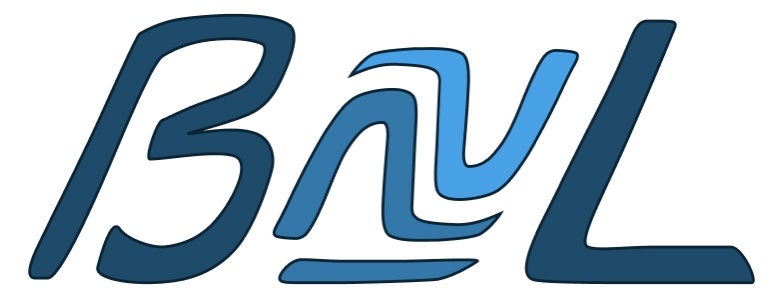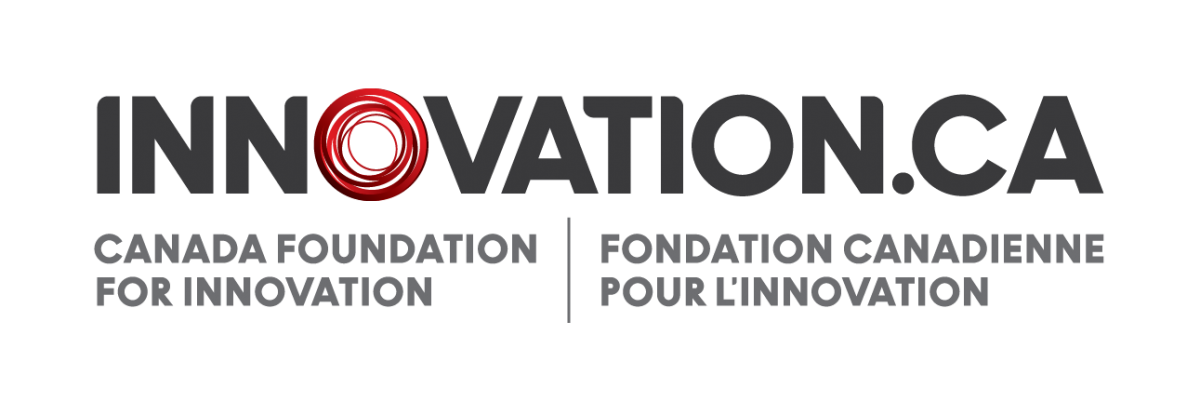Welcome to the Brunner Neutrino Lab (BνL)
Our group focuses on determining the nature of the neutrino, i.e., whether neutrino and anti-neutrino are in fact the same particle, by searching for neutrinoless double-beta decays (0νββ) in the isotope 136Xe. We are currently taking data with our EXO-200 detector, which is located about 650 m below the surface in the WIPP mine in south-east New Mexico, USA. So far, we could only report results of one of the most sensitive searches for 0νββ but have not observed a positive signal yet. In order to greatly improve the sensitivity of our measurement, the collaboration started developing a next-generation detector, called nEXO. This detector will contain 5 tonnes of liquid Xe and is anticipated to be located at the SNOLAB underground laboratory in Sudbury, Ontario.
The McGill group supports operation of EXO-200 and is involved in data analysis. For the nEXO project, we are developing vacuum ultra-violet light sources and are working on integrating photon detectors into larger area tiles. In addition, we are developing a technique to extract 136Ba ions from xenon gas. This so-called Ba-tagging technique will allow an unambiguous identification of events as true ββ decays once a 0νββ signal has been observed.
Brunner Neutrino Lab Github
The Brunner group develops various projects for its lab and the experiments it performs. Some of the projects and software are made public as they have wide applicability and could benefit others working in labs. The list of projects currently hosted on the BνL github is:
- Lab Environmental Monitor: This project records environmental variables from various sensors such as a particulate counter or pressure differential sensor.
The link to the BνL github is available here.
If you are interested in joining the exciting search for the nature of neutrinos, then contact me ( ).
News
-
October 2025
Three members of the Brunner group won awards for their academic success! Congratulation to Riya, Samin and Simon for winning the physics department Graduate Excellence Award! -
August 2025
Congratulation to Ethan for winning the First place at CASST 2025 for his presentation on the Characterization of Hafnium for LoLX!
Ethan Coulthard's presentation on Hafnium Characterization for use in LoLX wins First place at CASST 2025 and receives an honorable mention at the McGill Physics Summer Undergraduate Research Showcase.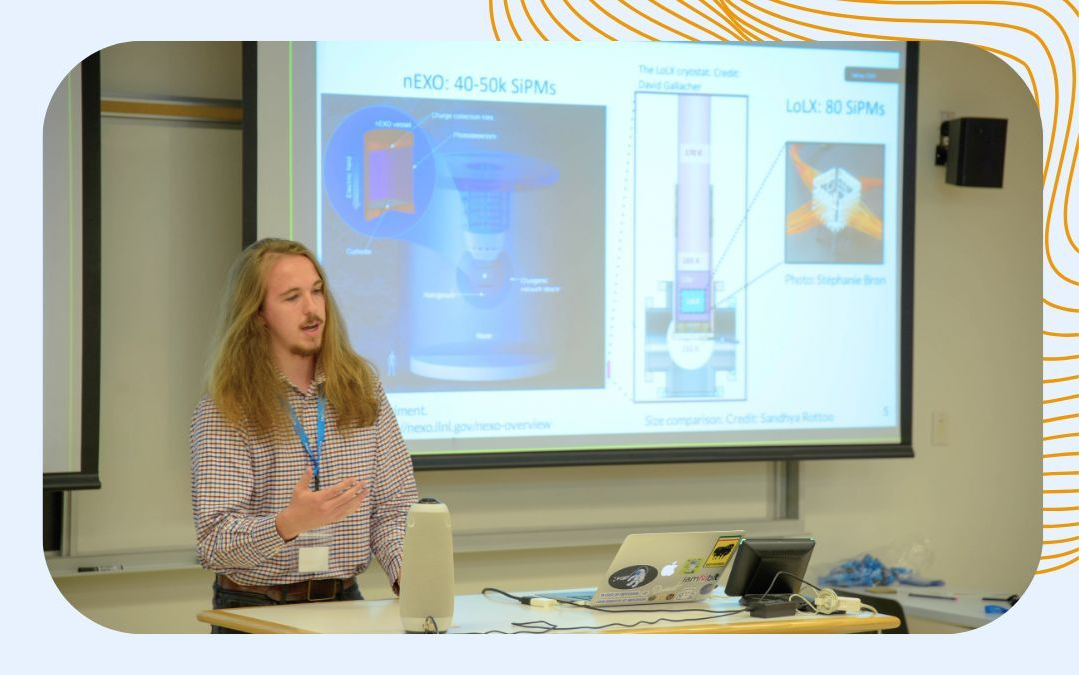
-
June 2025
Congratulation to David for winning the 2024 Department of Physics Community Building Award!
Congrats to David Gallacher on being awarded the 2024 Department of Physics Community Building Award for his work in restructuring and revitalizing MGAPS.
Samin wins the second overall poster prize and first place in the CAP Applied Physics and Instrumentation division!
Congratulations to Samin Majidi for winning first place in the CAP Applied Physics and Instrumentation division and the Second place overall at CAP for her poster on the development of a system to monitor the PMT performance and the water quality in nEXO's water Cherenkov muon veto.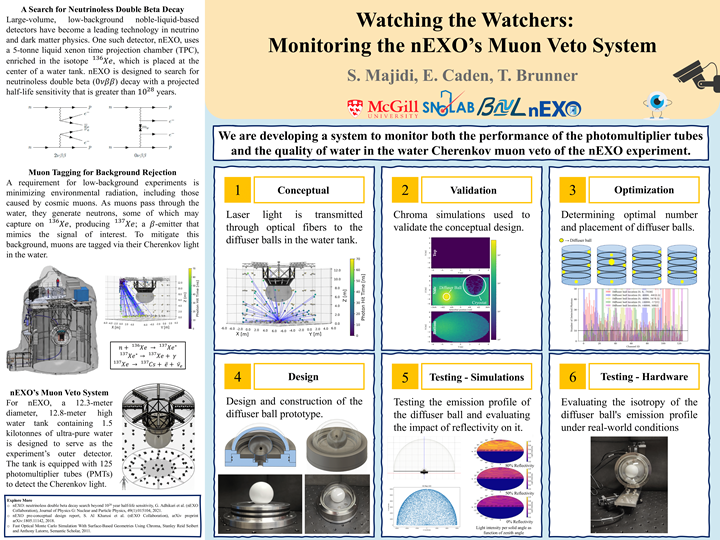 .
.
-
May 2025
Welcome to the Summer 2025 Students
Welcome to Jasmine Boyd, Alfredo Sosa Morenoo and Ethan Coulthard; the undergraduate students who will be working at the BνL for the Summer of 2025. -
Jan 2025
Simon Lavoie joins the group for his MSc!
Welcome back to Simon who joins the group again, this time as a Master's student! -
December 2024
Lisa completed her MSc!
Congratulations to Lisa Rudolph for completing her Master's Degree. Best wishes for her future career! -
October 2024
Lucas defended his Dissertation!
Congratulations to Lucas Darroch for defending his PhD Dissertation on October 17th! -
August 2024
Riya Rai joins the group as a PhD Student!
We welcome Riya back to the group who joins us again after a short while, this time as a PhD student! -
July 2024
David wins the Alexander Mcfee Memorial Fellowship!
Congratulations to David Gallacher for winning the Alexander Mcfee Memorial Fellowship for his research on SiPM Characterization and Optical Simulations in Liquid Xenon!
nEXO 3D Scale Model Creation!
The undergraduate students at the Brunner Neutrino Lab have created a new nEXO 3D Scale Model, now with different LEDs for the different decay and background types! Massive thanks to Hannah Sousa-Fronenberg for editing the video for the creation process which you can watch below or alternatively click here to be redirected to its youtube link.
-
April 2024
Zach defended his Dissertation!
Congratulations to Zachary Hockenbery for defending his PhD Dissertation on April 2nd!
Soud wins the CAP PPD Thesis Prize !
Congratulations to Soud Al Kharusi for winning the CAP PPD Thesis Prize for his PhD Dissertation! -
November 2023
Soud defended his Dissertation!
Congratulations to Soud Al Kharusi for defending his PhD Dissertation on November 23rd! -
June 2023
Lisa wins the First poster prize in the CAP Particle Physics Division!
Congratulations to Lisa Rudolph for winning the First place in the CAP PPD devision and the Second place overall at CAP for her poster on A Xe-127 calibration source for liquid Xenon experiments.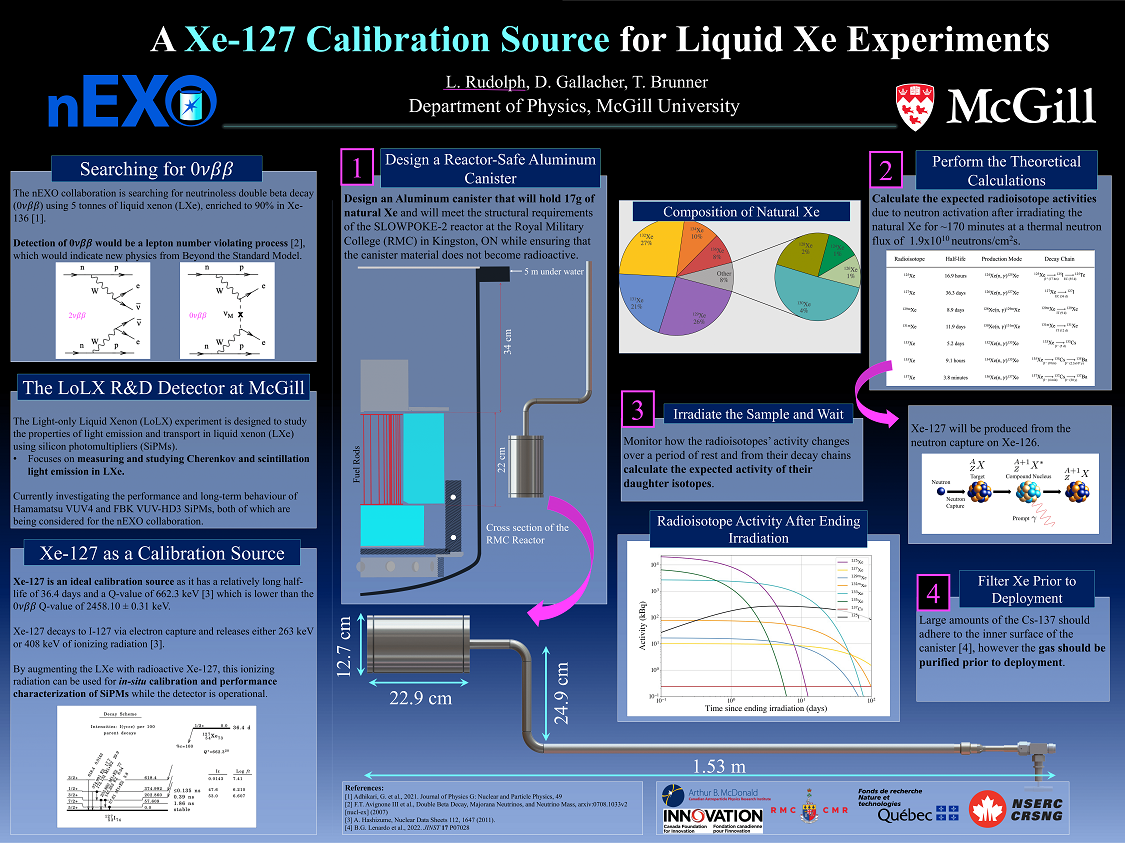 .
.
-
May 2023
Hussain obtained an FQRNT Scholarship!
Congratulations to Hussain Rasiwala for receiving an FQRNT Scholarship for his great academic performance! -
April 2023
Kevin defended his Dissertation!
Congratulations to Kevin Murray for defending his PhD Dissertation on April 11th! -
September 2022
Hussain is awarded with the Chalk-Rowles Fellowship!
Congratulations to Hussain Rassiwala for receiving the Chalk-Rowles Fellowship for his exemplary performance during his Graduate studies! -
August 2022
Congratulations to Laura and Michael for their performance at CASST 2022!
Congratulations to Laura for winning the CASST 2022 Grand Prize Award and 3rd place at the Summer Student Talk Competition for her talk on pulse fitter for LoLX waveforms. Michael received a CASST Honorable Mention for his presentation on the Cloud Chamber he built during summer! -
June 2022
Soud wins the Overall Student Poster Prize at the CAP 2022 Congress!
Congratulations to Soud for winning the 1st place in the Overall Student Poster category and 2nd place in the Particle Physics Division at CAP 2022 for his poster on Chroma simulations for the nEXO outer detector! Well done. You can find Soud's poster in full resolution here.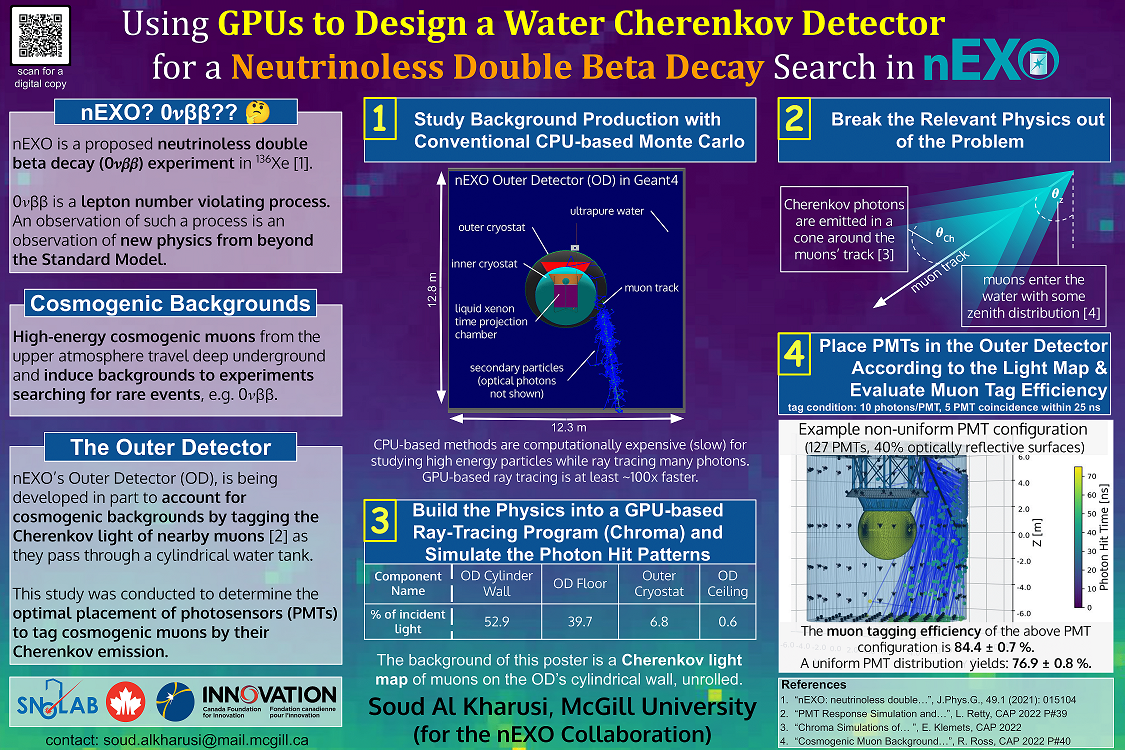
-
May 2022
Congratulations
Congratulations to Hussain Rassiwala for graduating with his Master's degree and continuing into his PhD! Well done! -
April 2022
Welcome to the Summer 2022 Students
Welcome to Laura Gonzalez Escudero, Minya Bai, Kevin Nguyen, Katherine Lei, Jordan Agathe, Yossera Taghi and Michael Hétu; undergraduate students who will be working at the BνL for the Summer of 2022. Welcome back to Megan Cvitan who joins us again for the summer, this time as a TRIUMF MSc student. -
February 2022
Publication
The paper on the BνL Laser Ablation Source has been published in the Internation Journal of Mass Spectrometry.
K. Murray, et al., Characterization of a Spatially Resolved Multi-Element Laser Ablation Ion Source
Int. J. Mass Spectrom 472 116763 (2022), arXiv:2108.10758 .
Support
Last updated ©

